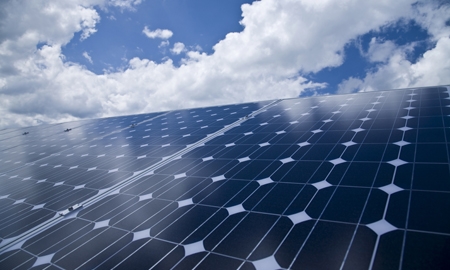
Diversity and consistency in the supply of energy is vital to maintaining growth and attracting further foreign investment in Ghana – and the government is aiming for renewable energy sources to represent 10 per cent of the nation’s electricity generation mix by 2020.
The country’s main renewable sources of power include wood fuel, hydro, solar, wind, biofuel, waste-to-energy and animal traction. “If you rely on a single source of energy, you run a huge risk if that source is in short supply,” says Charles A Darku, Chief Executive of GRIDCo. “We have a mix of hydro and thermal that is reasonably balanced to support long-term supply security.”
Ghana is endowed with enormous solar energy potential spread across the entire country. “There is a lot of sun here, so the raw material is definitely available,” says Mr Darku. “The Renewable Energy Bill is with parliament and concerns a feeding tariff that would assure investors of a rate best suited to their investment. Once that is passed, I believe it will be a lot clearer for German companies to invest here. We have sunlight 12 hours a day, 12 months of the year, so it should be a win-win business.”
According to the Ministry of Energy, the daily incoming solar radiation – insolation – level ranges from 4kWh/m2 to 6kWh/m2. (By comparison, the average annual insolation level of 2.2 kWh/m2 in Oslo is considered very low, and Miami’s 5.26kWh/m2 very high.) More than 6,000 solar-powered systems with an installed capacity of 3.2MW have been installed in the country, mainly for off-grid applications.
Chief Director at the Ministry of Energy Professor Thomas Mba Akabzaa has said that electricity demand, which is currently 1,400MW, is growing at about 10 per cent per year, and the Ministry has earmarked various areas for the sole purpose of wind energy generation to add to the supply mix. Preliminary wind resource assessment results in selected sites along the coast and high elevations – which already have road and grid network infrastructure in place – show gross wind electric potential of about 5,600MW.
The potential exploitable hydropower for Ghana is about 2500MW. Already, 1,180MW of this potential has been developed at the Akosombo and Kpong dams, and an additional 400MW is under construction. The remaining 840MW capacity is located at some 21 sites with capacities ranging from medium (95MW) to small (17MW) hydropower potential.
Ghana also has appreciable bioenergy potential and biomass energy in the form of wood fuel and charcoal consumption accounts for 72 per cent of total energy consumption. Two-thirds of Ghana – or 18.3 Mha – is under tree cover and the climatic and soil conditions are highly suitable for large-scale agriculture, energy crops, and sustainable wood fuel production. It is estimated that with annual rainfall of 1,300mm to 2,200mm, about 243PJ/yr or 65,000GWh/yr of wood fuel could be obtained from the existing tropical forests if harvested correctly.
0 COMMENTS